German Blue Rams Care Guide (April 2024)

Picture this: you’re an aspiring aquarist looking to dive into the captivating world of cichlids, but you’re worried about the notorious aggressiveness and tank-busting tendencies of these fishy characters.
Fear not, my fin-loving friend! German Blue Rams of the cichlid family, are here to save your day (and your tank).
- Vibrant colors
- Engaging personalities
- Ability to coexist with other peaceful fish
German Blue Rams are the ideal addition to your underwater oasis.
When we talk about cichlids most people immediately think of Oscars, Jack Dempseys, and other bruisers. But in reality, there are cichlids of all shapes and tank sizes to consider. And German Blue Rams are perfect for aquarists with small tanks but an appreciation for cichlid dynamics!
So, let’s embark on an aquatic adventure together, as we explore the exciting and oh-so-satisfying world of German Blue Ram care, from tank setup to breeding and everything in between.
Spoiler alert: it’s going to be a splashing good time!
German Blue Ram Care and Information
- Scientific Name: Mikrogeophagus ramirezi
- Adult Size: 2-3 inches
- Temperament: Peaceful to Semi-aggressive
- Lifespan: 3-5 Years
- Care Level: Beginner
- Water Temperature: 75-80℉
- Appearance: Gold base with blue spangles and dark bars on the eyes. Females have a bright purple patch on the stomach.
- Water pH: 5.5-7.0
- Diet: Carnivorous
- Tank Size: 20 Gallons
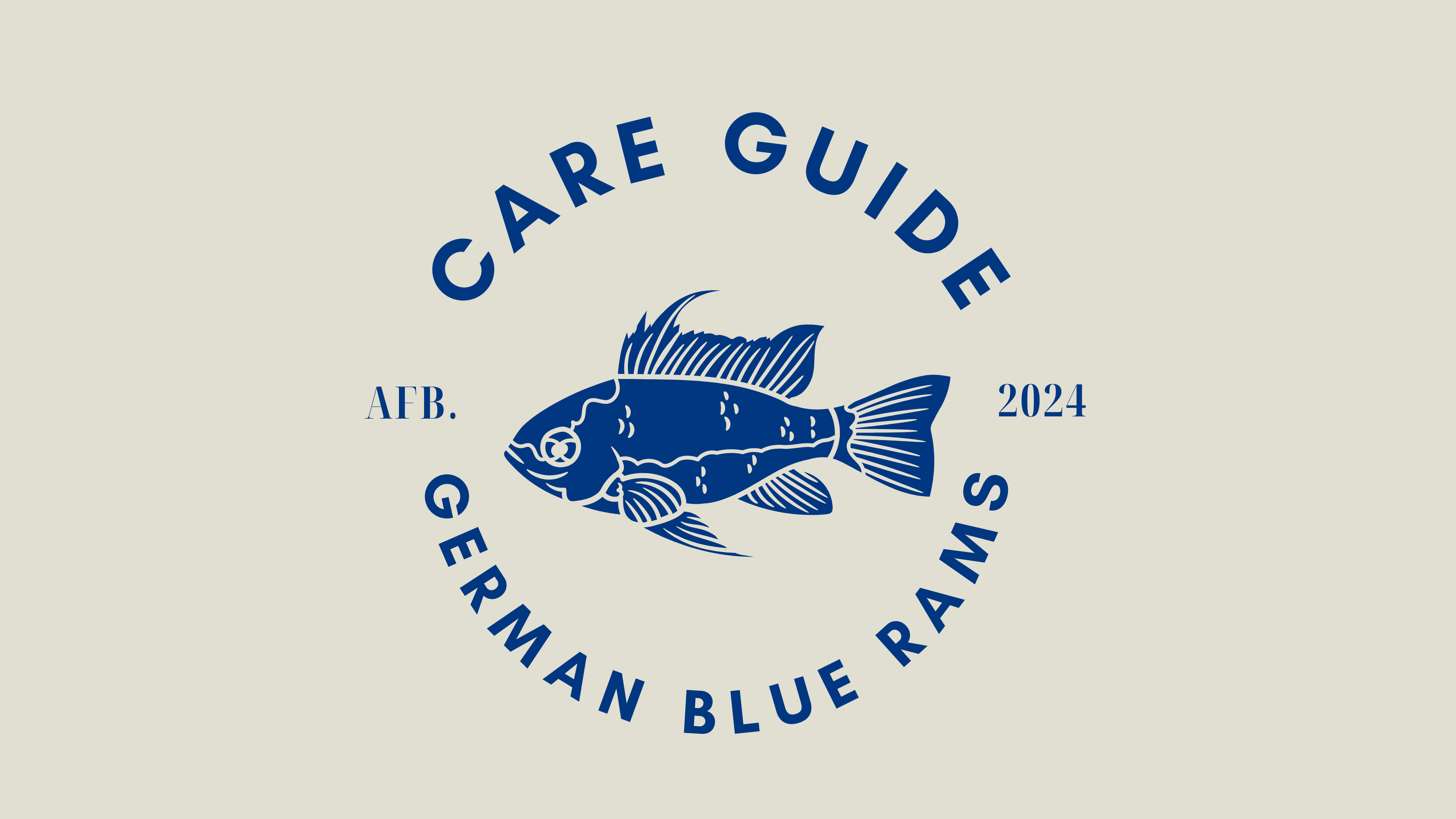
Overview of German Blue Rams
German Blue Ram Cichlid (also known as the Butterfly Cichlid) can be a little bit of a puzzle. Like many cichlids, they are highly individual in temperament. Some will ignore their tank mates entirely while others will become little terrors. Rams may chase tank mates that look similar to them, including Dwarf Gouramis and dwarf cichlids like the closely related Apistogramma.
But they rarely do much harm to their tank mates, especially when given enough space to form a territory. Rams will generally ignore tetras, danios, and other dissimilar-looking fish.
REMEMBER: when breeding, they are as devoted to their fry as any other cichlid and will nip at tank mates that get too curious about their young.
German Blue Ram Appearance
German Blue Rams are the most popular variety of these small cichlids! They have more blue scales than their wild ancestors, but not nearly as much as the increasingly popular Electric Blue Ram. There are also Gold, Albino, and even Black Rams out there.
How Long Do German Blue Rams Live?
Being a smaller fish, German Blue Rams have an average lifespan of 3 to 5 years, with 4 years being a solid average for these fish.
How Big do German Blue Rams Grow?
Males will reach up to 3 inches in length, with 2 to 2.5 inches being more common. Female German Blue Rams are always slightly smaller, rarely growing beyond 2 inches.
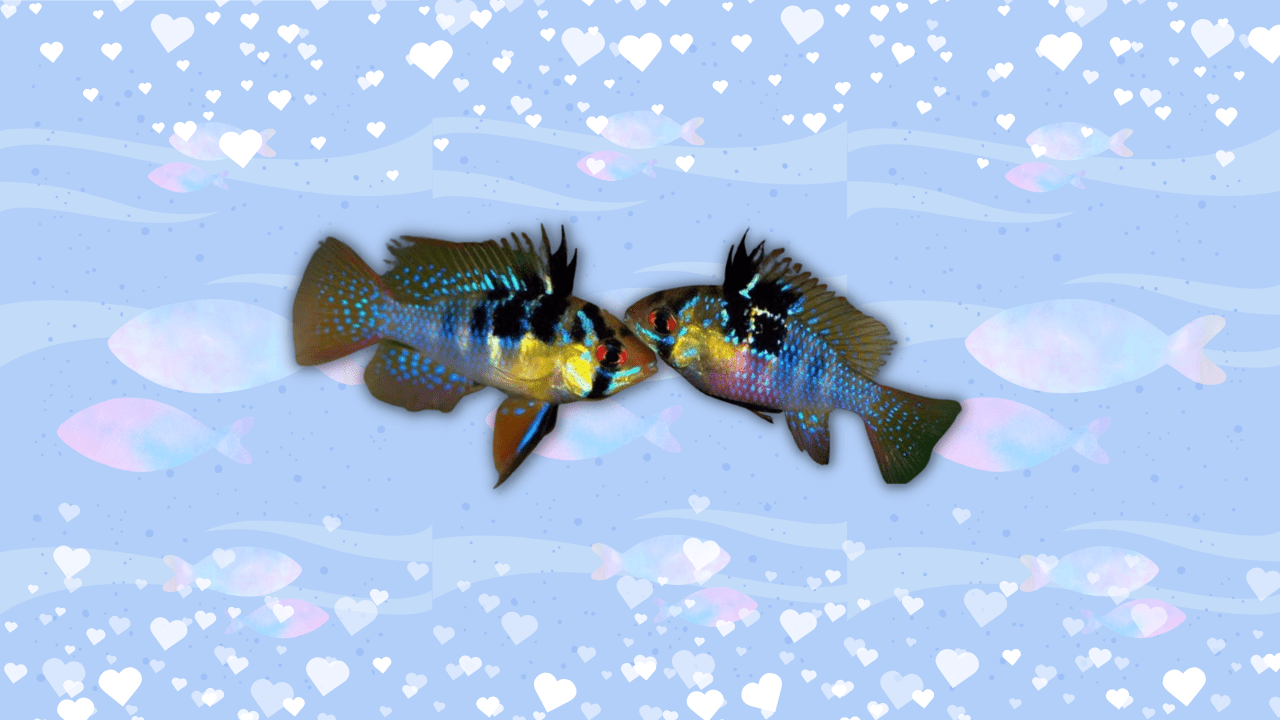
Sexing German Blue Rams
German Blue Rams are a little trickier to sex at first than most cichlids. They do have visible sexual differences but they are subtle, especially when looking at young fish (1 inch or under).
Male German Blue Rams will always be slightly larger than females of the same age. They often (but not always) have a more pronounced forehead. In a larger fish this would be a true nuchal hump, like that of a Flowerhorn or Midas Cichlid. But in a Ram, it’s just a slight difference that becomes more obvious as the male matures.
Males also have a longer extension to the first few rays of the dorsal fin when sexually mature. Lastly, the blue spangles tend to be more extensive along their flanks and into their fins.
Female German Blue Rams, on the other hand, are always smaller. They usually have a plump belly at all times, even when not ready to spawn. And that belly will have a bright purple patch, which males never have. She will likely be investigated constantly by any males in the tank for breeding possibilities.
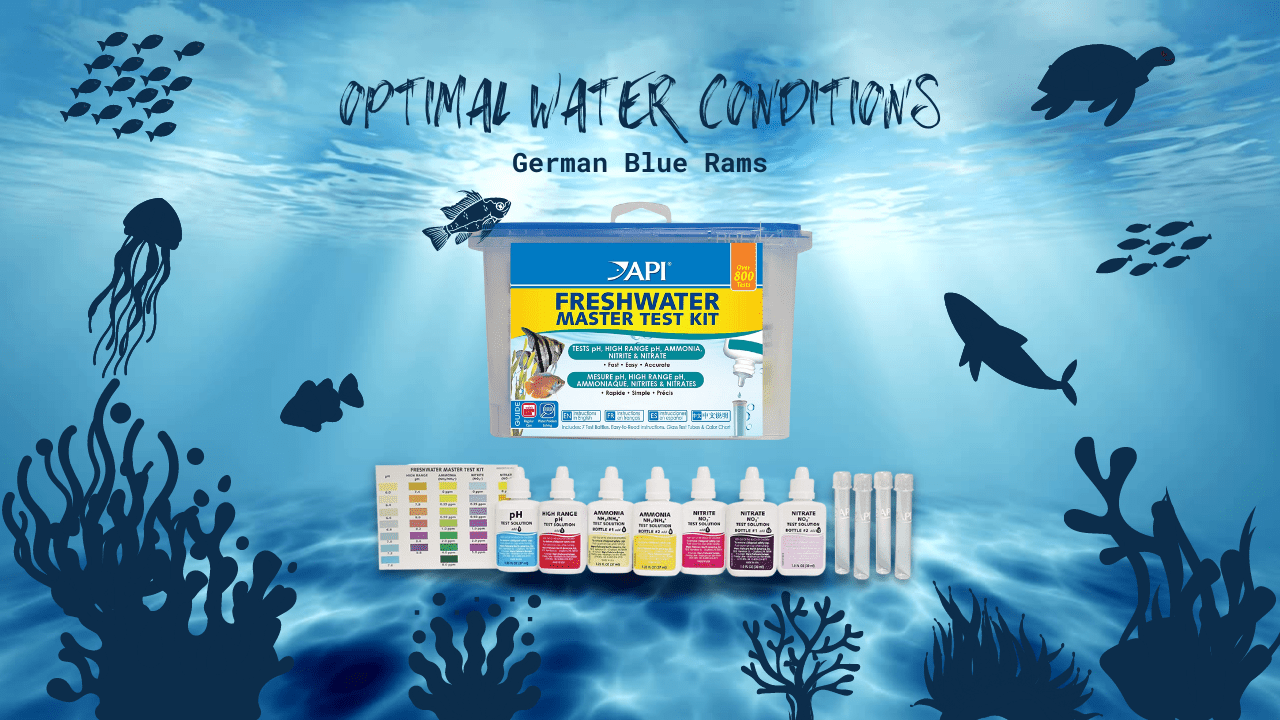
Optimal Water Conditions for German Blue Rams
The wild ancestors of German Blue Rams hail from the Orinoco River system in Venezuela and Colombia. Here, the temperatures remain tropical most of the year, rarely straying from 75-80℉.
WARNING: when kept below (75-80℉) these temperatures, German Blue Rams are susceptible to infection from opportunistic diseases like ich and body/fin fungus. They will also eat less and not produce eggs and sperm for breeding.
Warmth is a major key to successfully caring for these fish.
Water chemistry is the second major issue when keeping German Blue Rams happy. Even though they have been tank bred for generations all Ram varieties have a strong preference for soft, acidic water conditions. The pH should be between 5.5-7.0. While they may eat well and live long in alkaline conditions (pH 7.0+) it’s needlessly stressful for them and they will not breed.
Recommended Product:
Rams aren’t delicate but are slightly susceptible to elevated levels of nitrogenous waste products (ammonia, nitrite, nitrate). If you start getting lax with keeping water quality where it should be they will be some of the first fish to suffer.
So performing regular tests of your water parameters is critical to keeping them healthy!
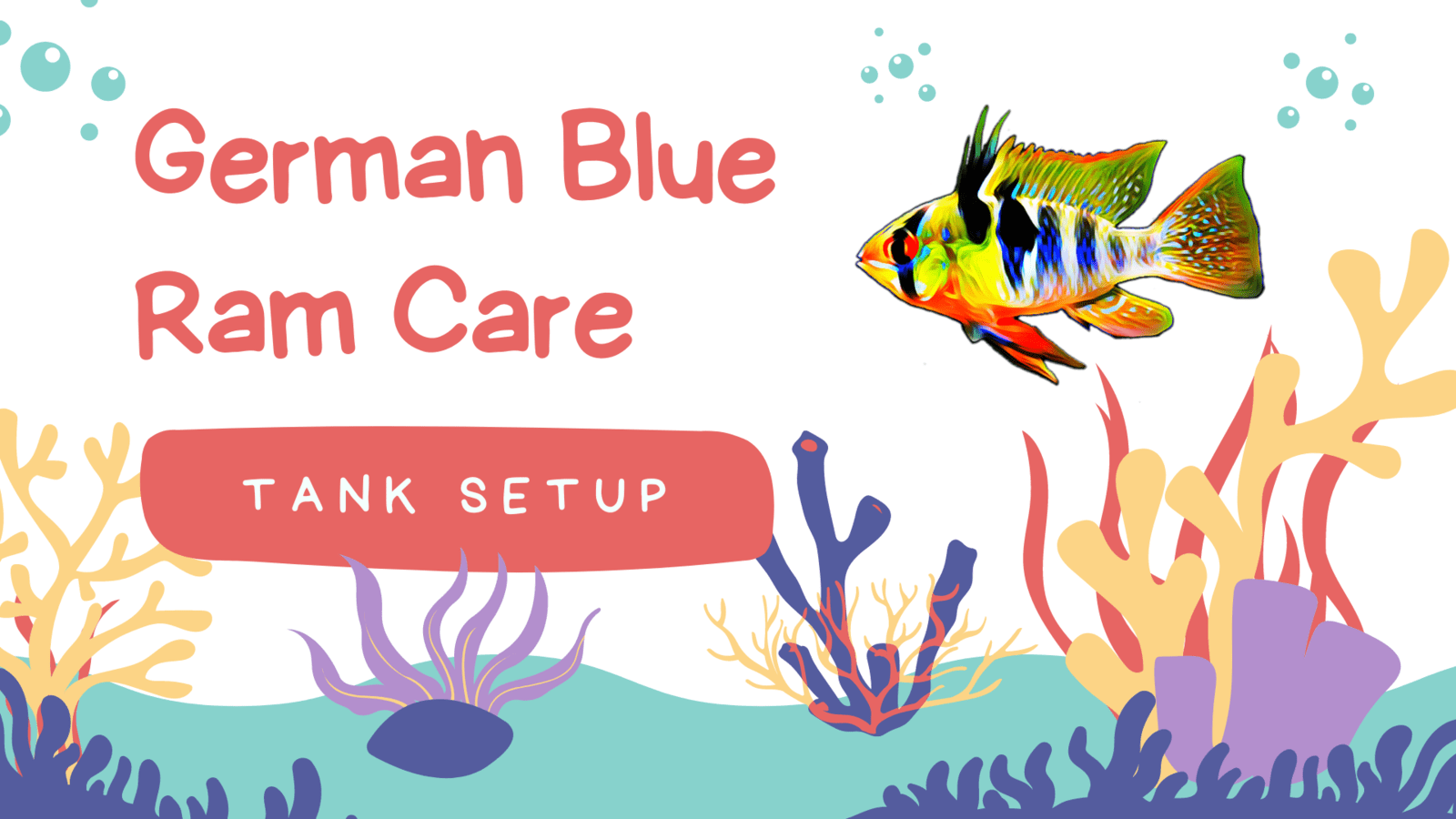
Tank Setup for German Blue Ram Care
Being true dwarf cichlids you can keep German Blue Rams in smaller tanks than their larger cousins. A single breeding pair will find even a 10-gallon tank cozy if they are the only inhabitants.
But when keeping them with tank mates you should go no smaller than 20 gallons. And when keeping multiple Rams together, you should add 10 gallons of space per additional male since they will fight occasionally and need space to call their own.
Tank Decorations
Ah, tank decorations – the fine art of turning a glass box filled with water into a thriving aquatic paradise. To make your German Blue Ram Cichlids feel right at home, you’ll want to give them a tank that’s a delightful mix of open swimming space and cozy hiding spots.
Here’s a list of tank decorations that you could try:
- Plants
- Live Rock
- Caves and Overhangs
- Corals and Artificial Reef Decorations
Also, hardy plants like Java Moss are your new best friends, as they not only serve as fantastic hideouts but also help maintain water quality. It’s a win-win, really.

Compatible Tank Mates for Ram Cichlid
German Blue Rams are the perfect size for aquarists with smaller tanks that still want to experience the personality that cichlids are famous for! They will get along with just about anything so long as they aren’t too similar in color and temperament. Otherwise they may be mistaken for challengers, which can cause fights to break out.
Livebearers like Platies are a good choice. But be careful with Bettas; their showy fins, colors, and semi-aggressive temperament may make them obvious targets for fights with a Ram.
Small invertebrates like dwarf shrimp and snails are also a poor choice since your Rams will find them delicious and pick them to death.
Good Tank Mates for German Blue Rams Include:
- Danios, Neon Tetras Rasboras, and other small, schooling fish
- Platies, Guppies, Mollies, and other Livebearers
- Dwarf Otocinclus, Corydoras, and other small Bottom Dwellers
NOTE: these fish are quite the social butterflies (pun intended), so make sure they have great tank mates to mingle with. Gold Rams and other non-aggressive fish are perfect companions, ensuring your tank is as harmonious.

German Blue Ram Diet
German Blue Rams are carnivorous cichlids. They are called “micro predators” because they feed on tiny crustaceans, worms, fish fry, insects, and other small animals they find in the water column.
Therefore we want to provide our pets with a good selection of fresh and frozen foods alongside a protein-rich prepared formula! Simple frozen items from the freezer of your pet store that your Blue Rams will love include bloodworms, brine shrimp, and daphnia. Live tubifex worms can be fed sparingly as they are high in fat but great for conditioning Rams to spawn!
Small pellets are best for German Blue Rams since they help keep the water clear. But they are small enough to eat flakes as well, if that’s all you have! To learn more about other options, read about color enhancing cichlid food.
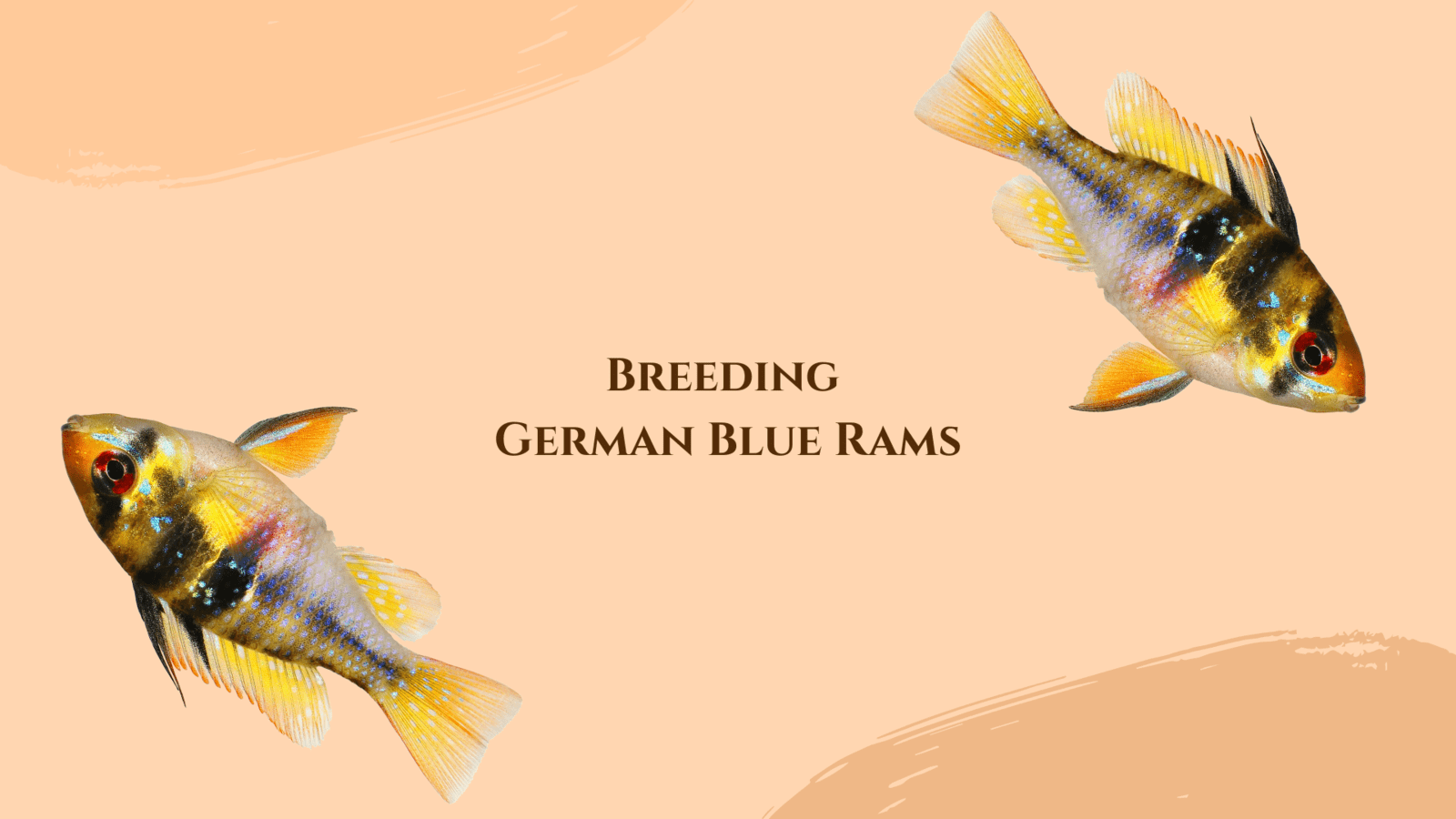
Breeding German Blue Rams
To get started, you’ll want to pay close attention to the male ram’s body shape and the temperature range of your tank.
Your fish will be as happy as a clam with the right tank requirements in place, like frequent water changes and a diet that includes live mosquito larvae and brine shrimp.
How Do I Condition German Blue Rams to Spawn?
In order to condition German Blue Rams to spawn, you’ll need to provide them with continually warm conditions (75-80℉), soft, acidic water (pH <7.0), and plenty of fresh foods on top of their usual prepared formula. A large (50%) water change alongside steady increases to 82-84℉ can simulate the start of the spring rainy season, which is a spawning cue for many South American fish! In the wild, Rams can even be found in blackwater conditions, where the pH gets as low as 4.0-4.5. If you have any driftwood in the aquarium the tannins released over time by the waterlogged wood can also stimulate spawning. Other blackwater like Discus, Angelfish, and Tetras will also appreciate the plant tannins!
Lastly, you’ll need to get a viable pair. Cichlids can be picky sometimes and German Blue Rams are no exception. The male and female will likely take to each other – but possibly not. You can increase your chances of success by raising a small group of 4-6 youngsters together until a pair naturally emerges.
How Can I Tell if a German Blue Ram is Pregnant?
Once your German Blue Rams have been conditioned for spawning, you’ll see distinct behavior and physical cues in your fish. The female will become even plumper and her colors will intensify, particularly the purple patch on her belly. The male’s colors will also become more intense, especially the blues along his flank. Both fish will have fiery red colors in their eyes and the vertical black bar will deepen in shade.
At this stage they will start hunting for a place to spawn. German Blue Rams prefer a flat surface with an overhang, such as an overturned clay pot. But a flat rock or other hard surface will work just as well.
While they do dig a little they are too small to uproot every plant in the tank like large cichlids will. However they may start harassing their tank mates, especially if they are kept in a small aquarium. So you may need to move the parents or the tank mates to keep them from hurting or killing the other fish.
After conditioning and preparing your German Blue Rams for spawning, you may find it helpful to watch videos on the subject to get a better understanding of the process. I found this video, titled “The LIFE of a German Blue Ram: From Day 1 to Adulthood” to be particularly entertaining.
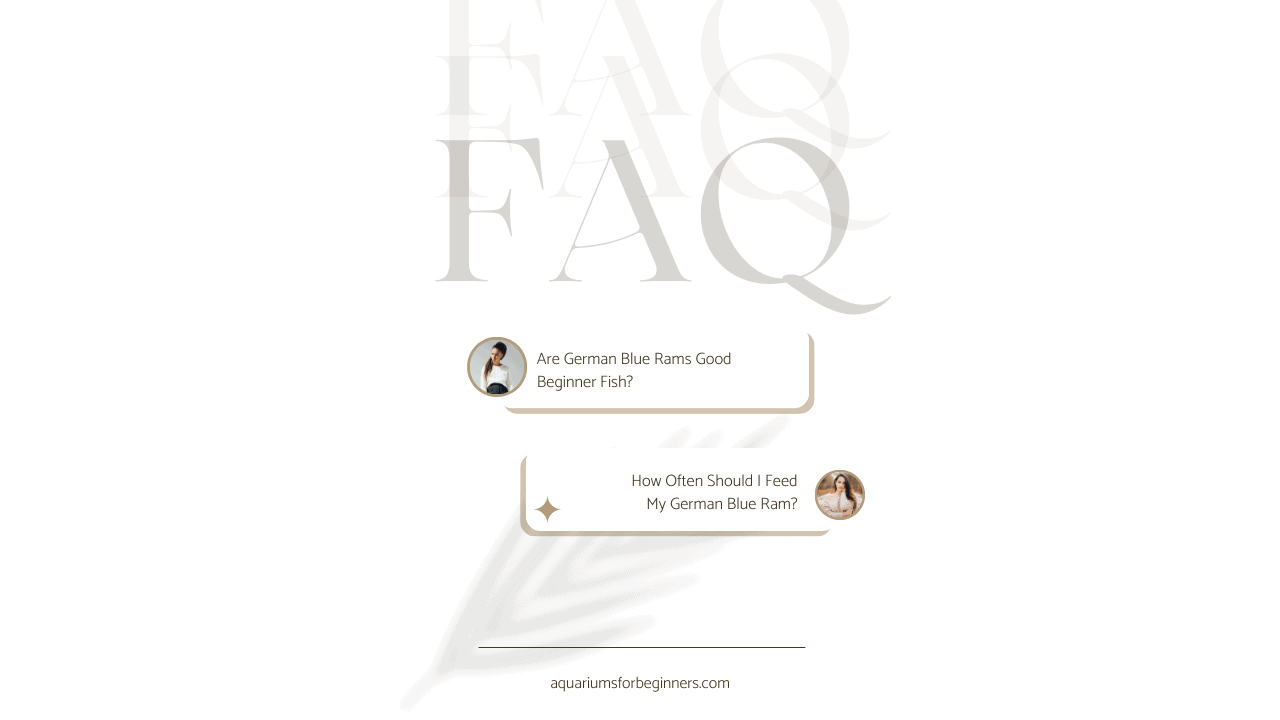
Frequently Asked Questions for German Blue Ram Care
Are German Blue Rams Good Beginner Fish?
German Blue Rams are ideal for intermediate to advanced aquarists, as they require a bit more attention to detail when it comes to water quality and tank setup. But hey, if you’re up for the challenge, these stunning fish will reward you with an aquarium that’s a veritable feast for the eyes.
Are German Blue Rams Easy to Breed?
German Blue Rams are of intermediate difficulty to breed. They need precise water conditions and good food but will likely breed if these conditions are met!
What is German Blue Ram Disease and How Can it be Prevented?
Fish Tuberculosis is a common disease that can affect wild German Blue Rams. To prevent it, always source your fish from reputable breeders, and maintain optimal water quality in your tank.
Can German Blue Ram Fish Live in a Community Tank with Other Fish?
German Blue Rams are peaceful for cichlids are great community fish! Just be careful if a pair decides to spawn because they are aggressive in defending their eggs and young.
How Often Should I Change the Water in my German Blue Ram Fish Tank?
To keep your German Blue Ram Cichlids healthy and thriving, aim for frequent water changes – about 25% to 30% of the tank water every week.
Remember, clean water is the key to happy fish!
Are Brine Shrimp Good for German Blue Ram?
Brine shrimp are like the caviar of the fish world – a true delicacy for your German Blue Rams. They’re a nutritious food source that will keep your fish happy and well-fed.
How Often Should I Feed My German Blue Ram?
German Blue Rams grow quickly and are active even through adulthood. They can be fed 2 to 3 times per day with no issues!
What are Electric Blue Rams?
Electric Blue Rams are the newest color morph, with even more vibrant blue scales. However, they are very sensitive to poor water conditions and not for beginners.
How Many German Blue Rams Should I Keep?
To avoid overcrowding, it’s best to keep one pair of German Blue Rams per 20 gallons of tank space, with an additional 10 gallons for each extra pair. This way, your fish can enjoy their free-swimming fry without feeling like they’re living in a sardine can.
And hey, if you’re ready to flaunt your German Blue Rams or aquarium like it’s the red carpet, come join our Facebook group with over 460k+ members and growing!
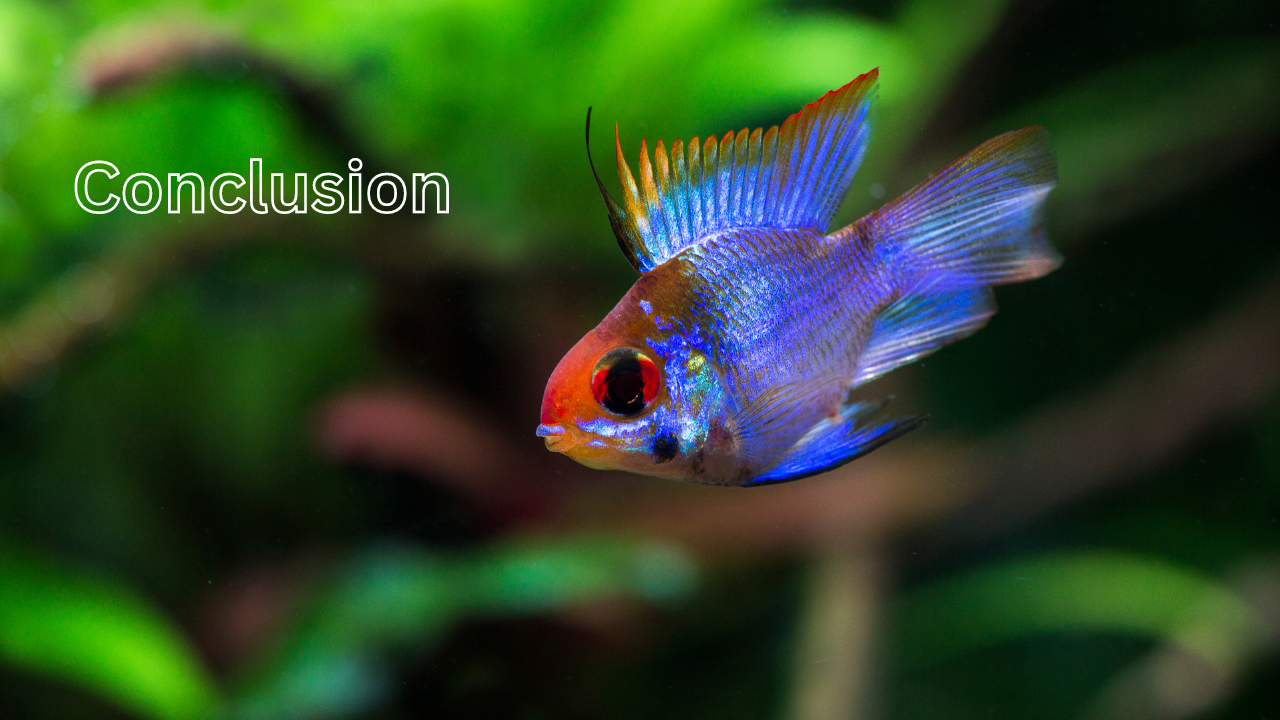
Conclusion
In conclusion, German Blue Ram cichlids, aka butterfly cichlids, have swum their way into our hearts and community tanks, offering the perfect blend of beauty, brains, and charm. Hailing from the exotic Orinoco River Basin in South America, these peaceful fish have adapted to our home aquariums without losing their connection to their wild roots.
With their unique blue dots and extended dorsal fins, these stunning fish bring the enchantment of their natural habitat right into your living room. By providing a ram tank with soft water, a few caves, flat stones, and hardy aquatic plants, you’ll create a happy haven for these dwelling fish and their potential tank mates. Plus, maintaining water quality and offering a varied diet, including baby brine shrimp and flake food, will keep them healthy and content.
So, whether you’re a seasoned aquarist or just getting your fins wet in the world of fishkeeping, German Blue Ram cichlids are the ideal choice for a community aquarium. With their peaceful nature, compatibility with other small fish, and mesmerizing appearance, they’ll captivate your attention and imagination for quite a while. Dive into the delightful world of the cichlid family and experience the magic of these extraordinary underwater gems.
No comments

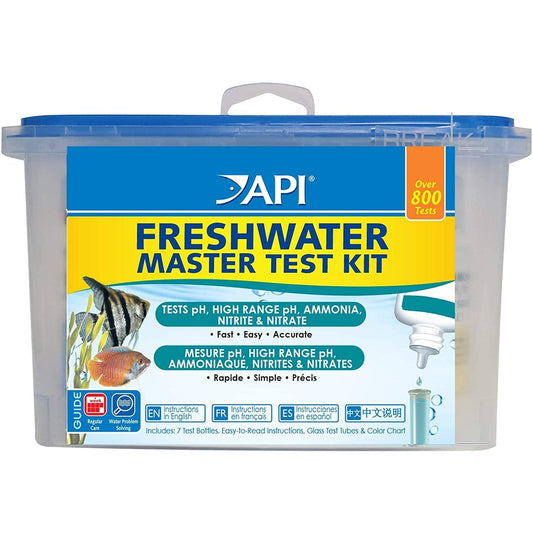
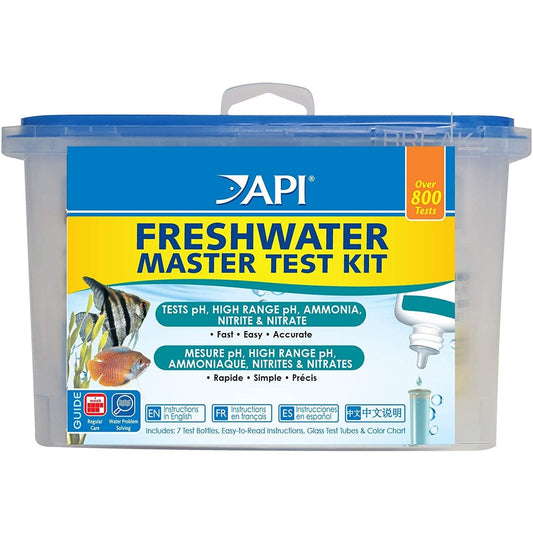
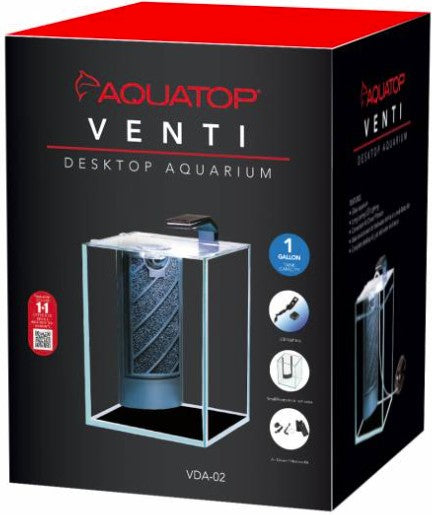



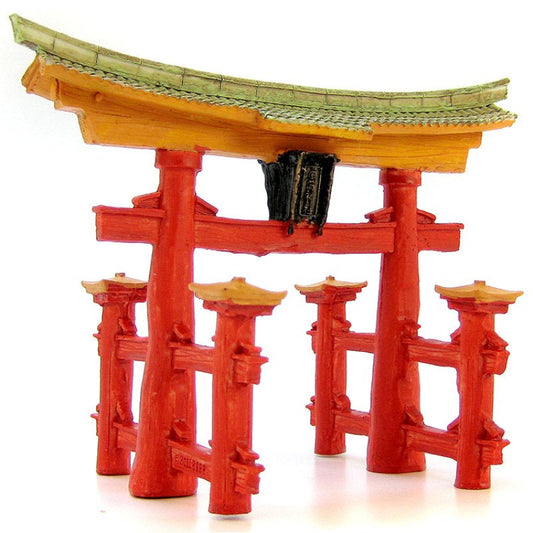


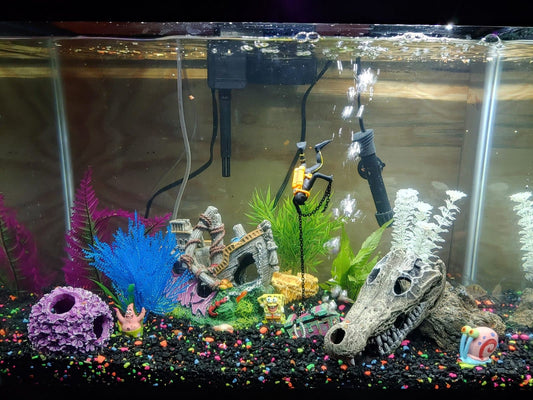



0 comments